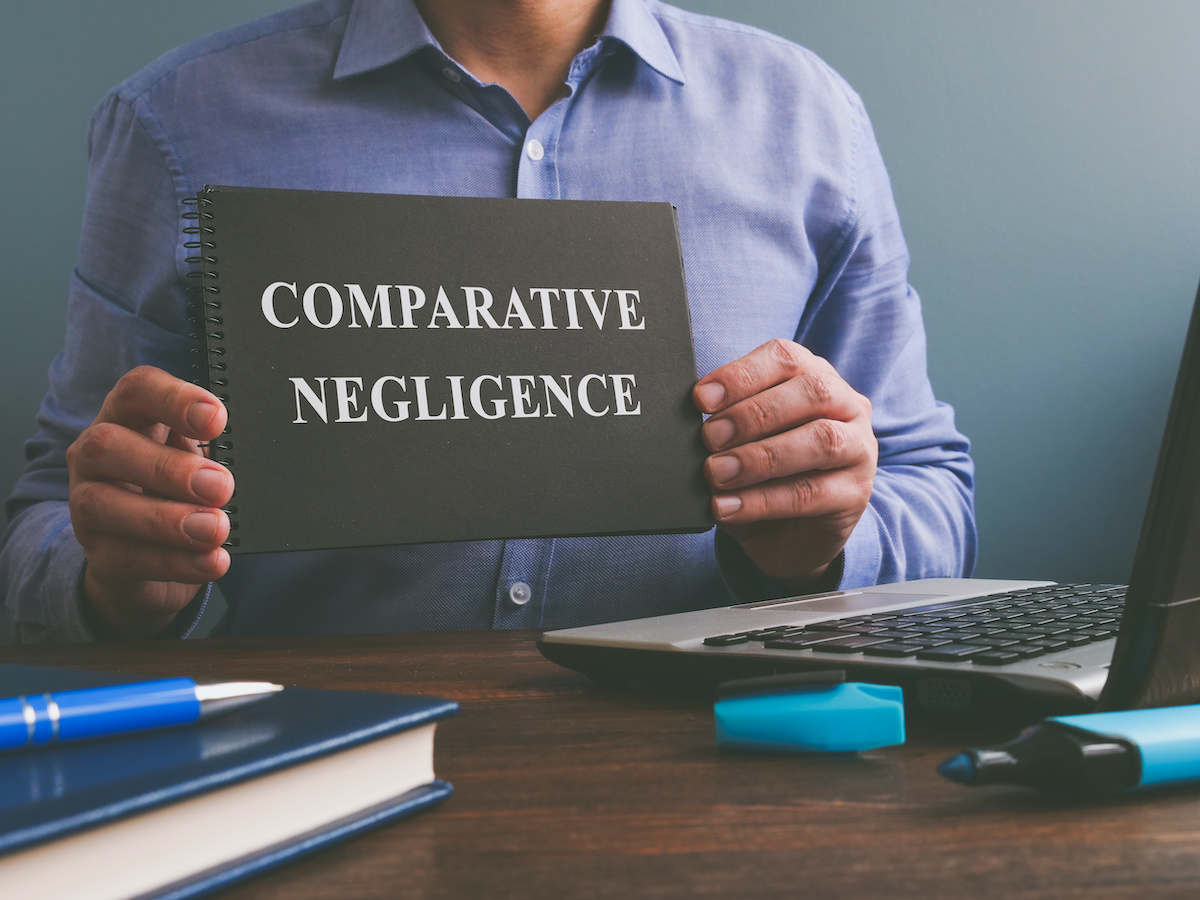When investigating new cases at our firm, we look to many different documents, such as insurance agreements, medical records, and police and accident reports, we have conversations with our client to get their story, and we study the law on certain issues relevant to the case. We pay special attention to the facts surrounding the injury and whether all applicable rules and laws were followed by all parties, meaning we look to determine what rules and laws were broken resulting in the accident or injury by everyone, including our own client. This is important because all states have one of two doctrines they follow – comparative fault or contributory negligence. Comparative fault looks to whether the injured party is to blame for any part of their injury and, if a verdict is obtained in their favor, the award may be lowered. Contributory negligence, however, puts a full stop on litigation for an injured party if they are found to have contributed to their injury in any way and does not allow an injured party to recover any award from a jury trial. Having this information about the potential case is important so that we, as the attorney, can preemptively plan for how to best move forward in litigation. In this blog, we will take a close look at comparative fault, contributory negligence, and which states embrace each doctrine.
The Basics
To understand these doctrines, it is imperative to understand: 1) how a jury will find in a plaintiff’s favor for negligence, and 2) how a jury assesses fault. First, a plaintiff, when making an allegation of negligence in any personal injury claim, must meet all elements of a negligent tort. These are: 1) a duty of care was owed to the plaintiff, 2) there was a breach of this duty, 3) the plaintiff was harmed; and 4) the breach of this duty caused or contributed to cause the plaintiff’s harm. For additional information on negligence and other torts, please read our Types of Torts blog post. If all elements are met and the jury, in the proper majority for that Court and after reviewing all relevant evidence, agrees, the jury will find in a plaintiff’s favor for negligence. Second, if the jury finds in favor of the plaintiff for negligence, they will assess fault. To do this, the jury again reviews the relevant evidence and assign a percentage value, from 1% to 99%, of fault to the plaintiff if they believe the plaintiff contributed to cause their injury related to the claim.
Comparative Fault
Comparative fault, also called comparative negligence, is a legal doctrine in which a plaintiff must have their damages awarded by a jury reduced if the plaintiff contributed to their injuries, no matter how slight. Under the umbrella term of comparative fault, there are two sub-types – pure and modified. Pure comparative fault means damages awarded by a jury will be reduced by the percentage the jury assesses for fault of the plaintiff. Even if the jury assesses 1% fault, this will be reduced from the final damages award. For example, if a jury finds in favor of a plaintiff and awards $100,000.00 but assesses 25% fault of the plaintiff, the final award would be $75,000.00. Pure comparative fault can be assessed from 1% to 99% with the awarded damages being reduced by that percentage. Modified comparative fault is slightly different, as this sub-type still allows plaintiffs to sue for damages, but, depending on the state, if a plaintiff was 50% or 51% at fault for their injuries, they are unable to collect damages awarded by a jury. Essentially, if a plaintiff is assessed to have been less than 51% or 50% at fault, depending on the state, they can collect damages awarded by the jury, but reduced by the percentage of fault. For example, if a jury finds in favor of a plaintiff and awards $100,000.00 but assesses 75% fault of the plaintiff, the plaintiff will not receive any of the awarded damages. If, in another circumstance, a jury finds in favor of a plaintiff and awards $100,000.00 but assess 30% fault of the plaintiff, the final award would be $70,000.00. Forty-Six states embrace one of the two sub-types of comparative fault.
Contributory Negligence
Contributory negligence is a strict doctrine that states if a plaintiff is even 1% at fault for their injury, they cannot collect any damages award from a jury. Following the same process as above, a jury can find that a plaintiff met their burden to show a defendant was negligent, but if the jury reviews all relevant evidence and believes the plaintiff is even 1% at fault for their injury, the plaintiff will not receive any of the damages award. For example, if a plaintiff was hit by a speeding car at a crosswalk and the jury finds the defendant driver was negligent and award the plaintiff $100,000.00 but assess 5% fault to the plaintiff for using the crosswalk when it was not giving right of way to pedestrians, the plaintiff would not receive any of the $100,000.00 award. Luckily, there are very few jurisdictions that still use the contributory negligence doctrine, including Alabama, Maryland, North Carolina, Virginia, and Washington, D.C.
Missouri’s Switch to Comparative Fault and Expansion
Specifically for Missouri, the doctrine of contributory negligence was a staple until 1983. The doctrine was put on the chopping block during the case of Gustafson v. Benda, a case where the plaintiff, a motorcyclist who overtook traffic on the left side, and the defendant, a motorist making a left turn, collided, and caused injury to the plaintiff. Gustafson v. Benda, 661 S.W.2d 11 (Mo. Banc 1983). In this ruling, the Court found that, in the best interest of all litigants, the comparative fault doctrine must be adopted and enforced. Id. at 15. This ruling, however, only applied to certain personal injury cases and was not extended to product liability cases. See Lippard v. Houdaille Industries, Inc., 715 S.W.2d 491, 493 (Mo. Banc 1986). It was not until July 1, 1987, that the Missouri Legislature codified the extension of comparative fault to product liability cases and abolished the use of the contributory negligence doctrine in negligent tort cases. Mo. Rev. Stat. § 537.765 (1987).
These legal theories can be hard to understand, but the injury law experts in St Louis at The Simon Law Firm, P.C. pay careful attention and take the time to explain them to our clients. It is important as a litigant to understand what is happening in your case and ask questions when unable to understand a part of your case. These doctrines play a part in case evaluation, but a full discussion with our clients is the best way to determine how to move forward on a case successfully. If you or a loved one has been harmed by someone’s negligence, please contact The Simon Law Firm, P.C. today for a free, confidential consultation.







